All Resources

What is Enterprise Risk Management (ERM)?
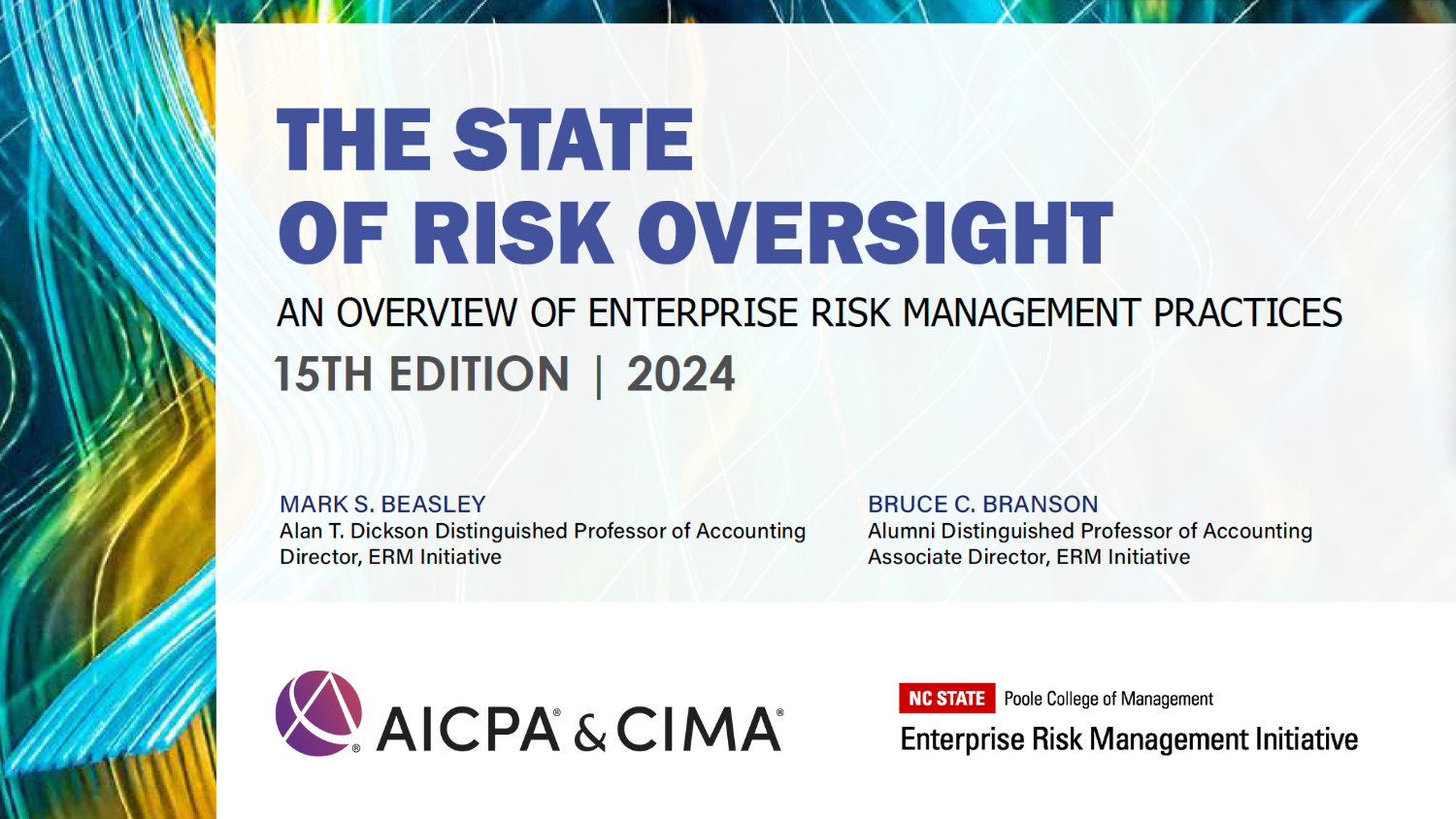
2024 The State of Risk Oversight: An Overview of Enterprise Risk Management Practices – 15th Edition
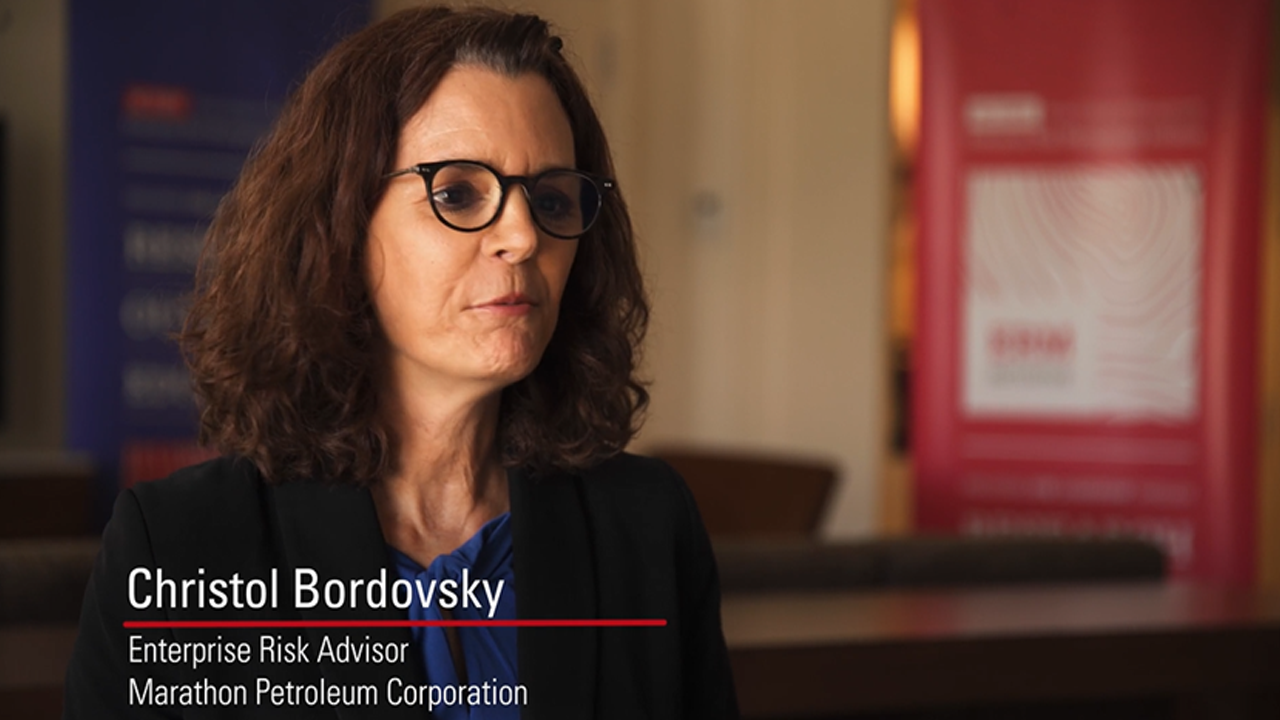
Managing Climate Risks
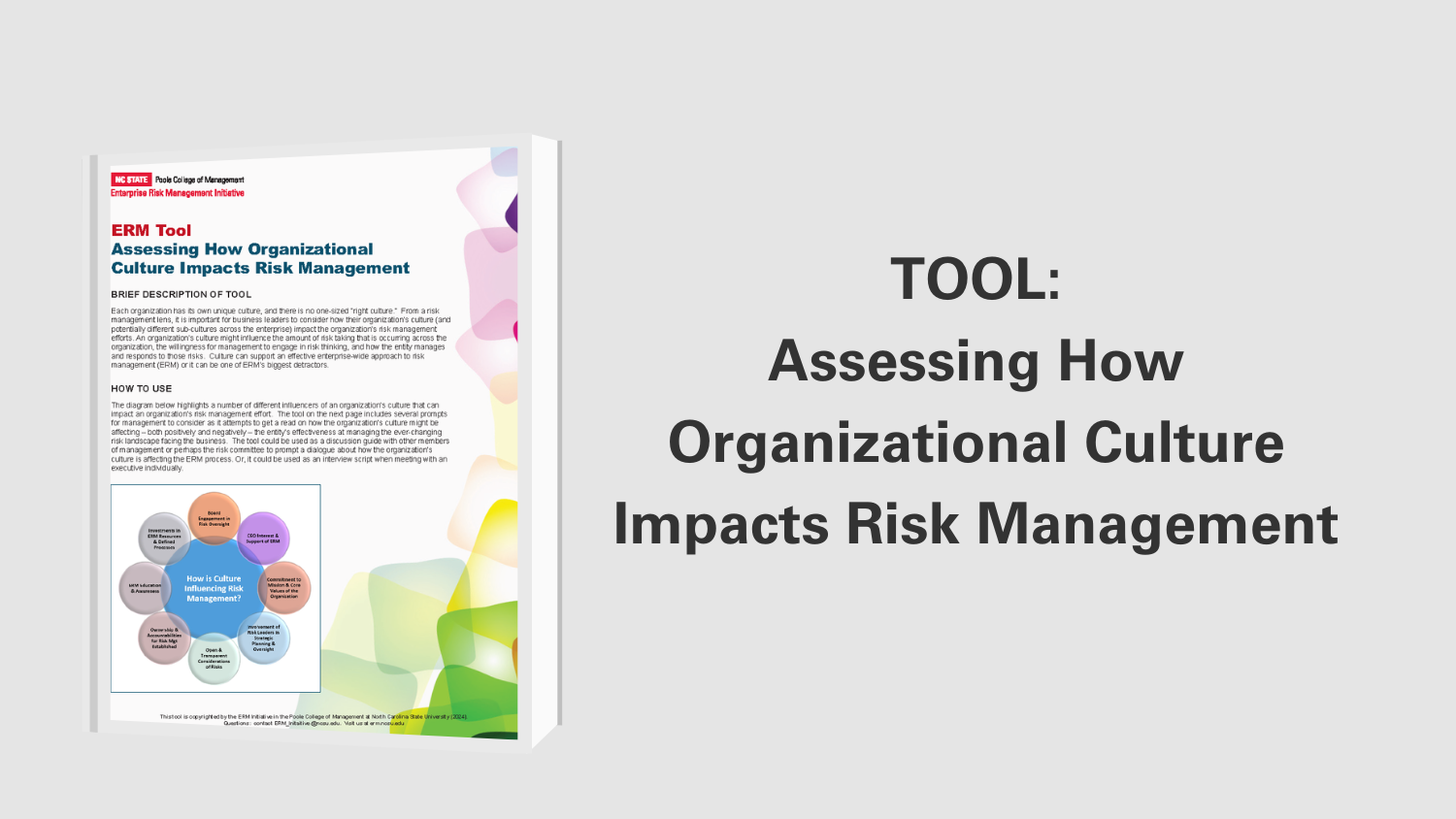
ERM Tool: Assessing How Organizational Culture Impacts Risk Management
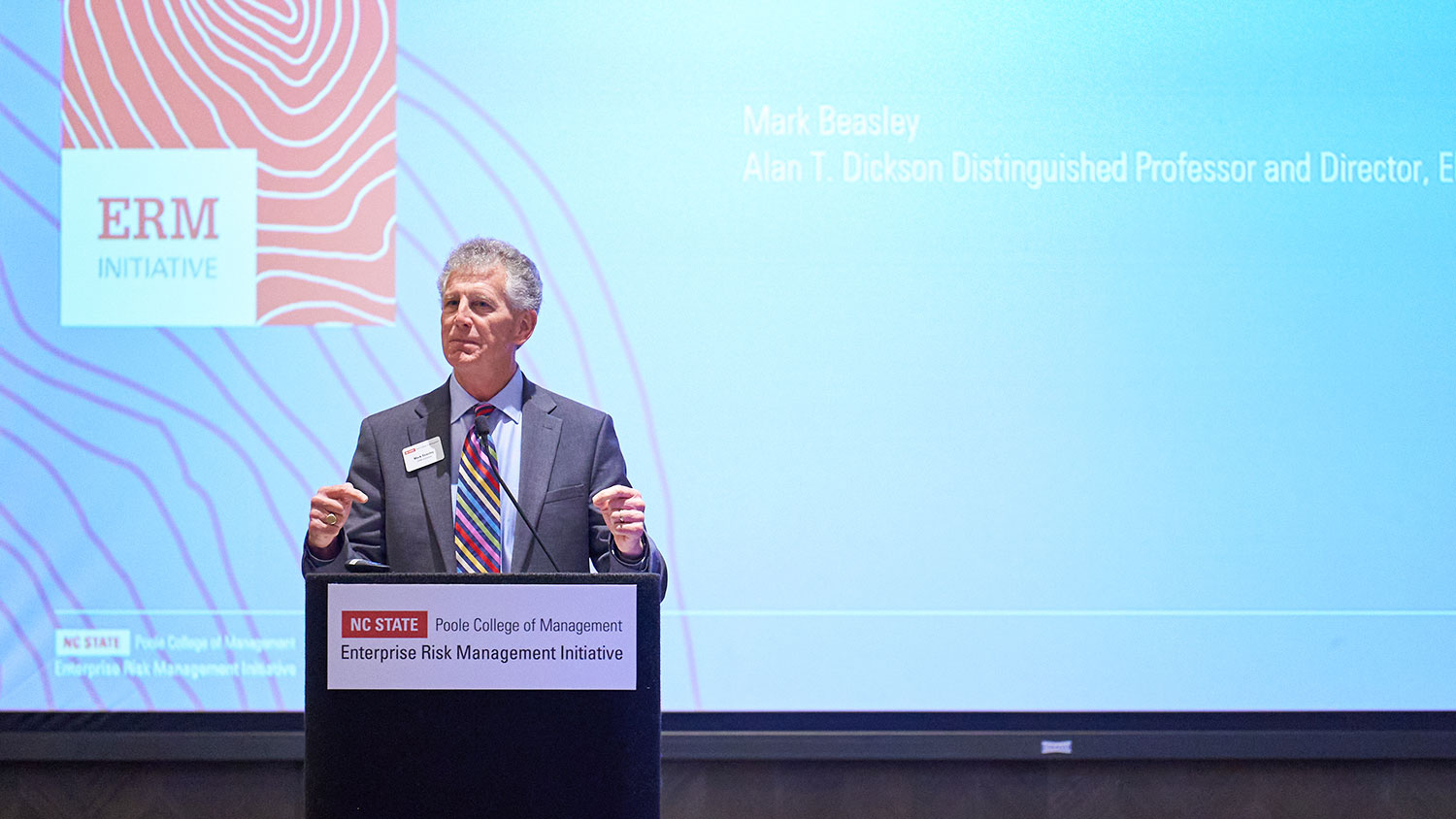
ERM Initiative Celebrates 20th Anniversary at ERM Roundtable Summit

Whited, Burd Examine SEC Climate Disclosure Amendment
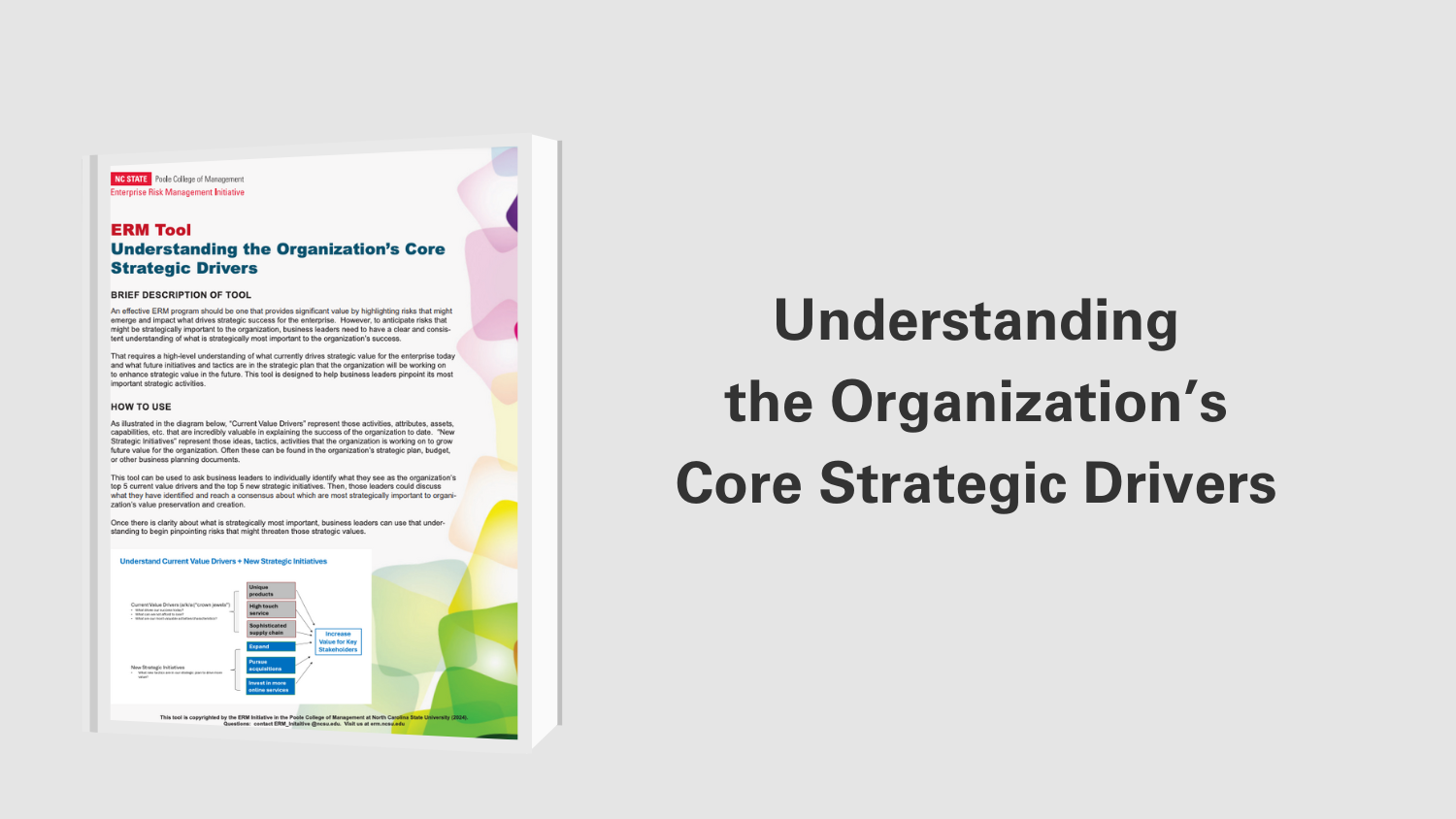
ERM Tool: Understanding the Organization’s Core Strategic Drivers
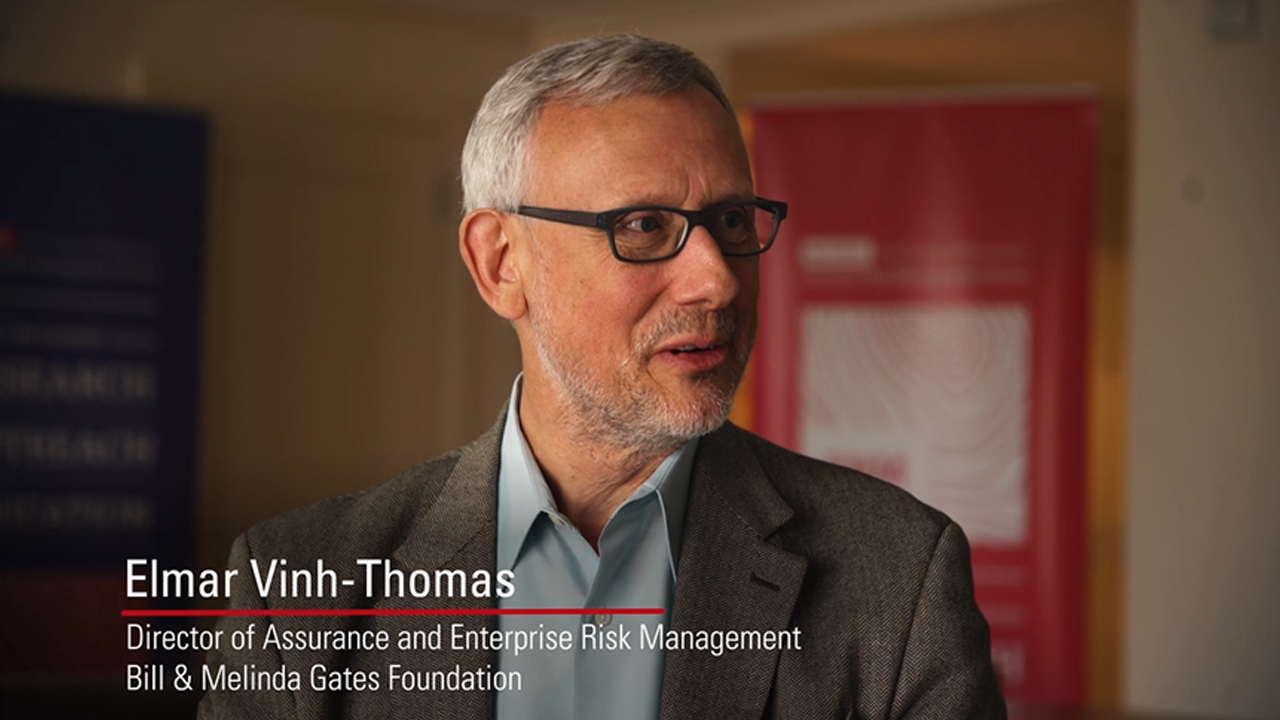
Monitoring Emerging Global Risks
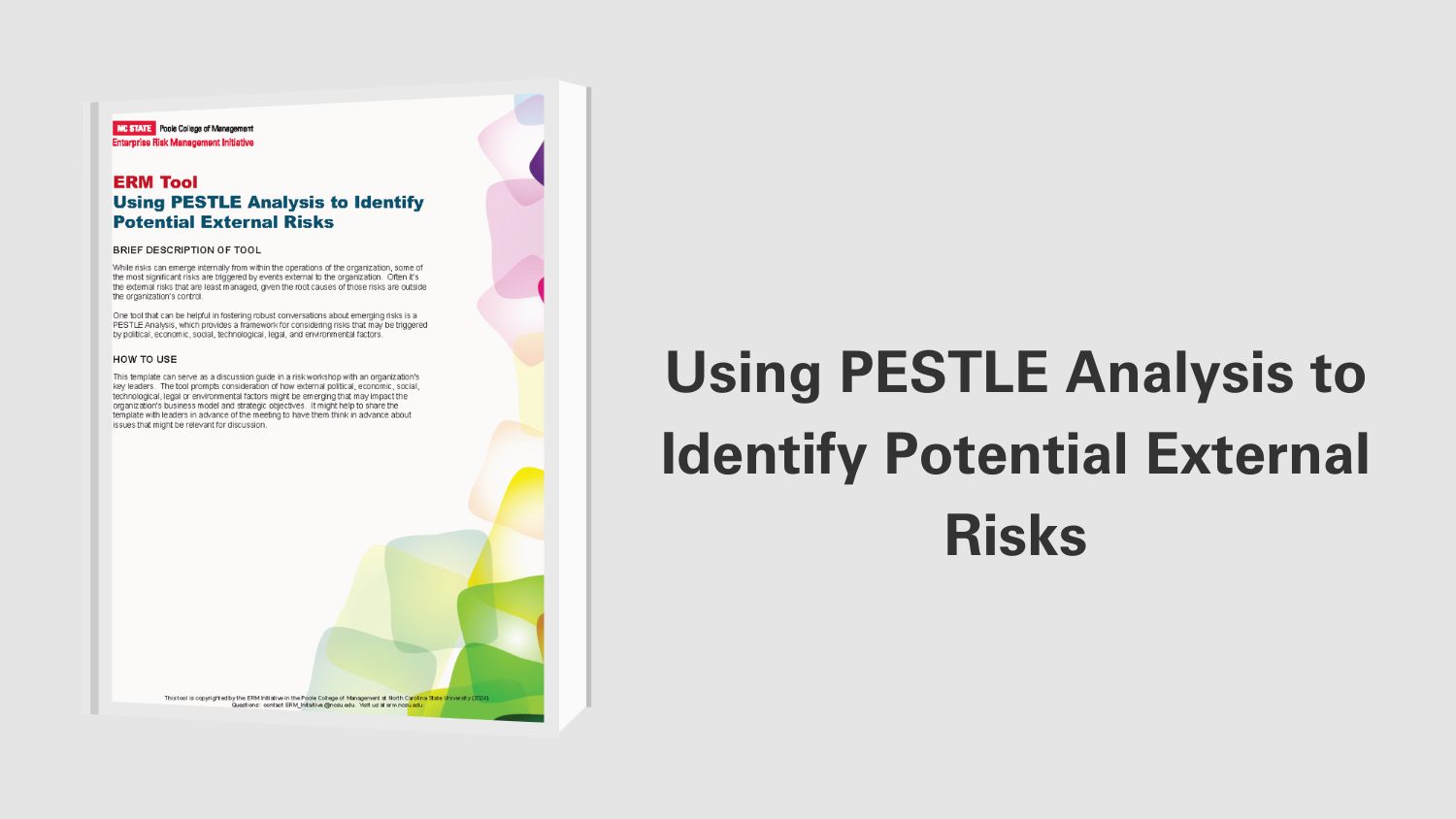
ERM Tool: Using PESTLE Analysis to Identify Potential External Risks
